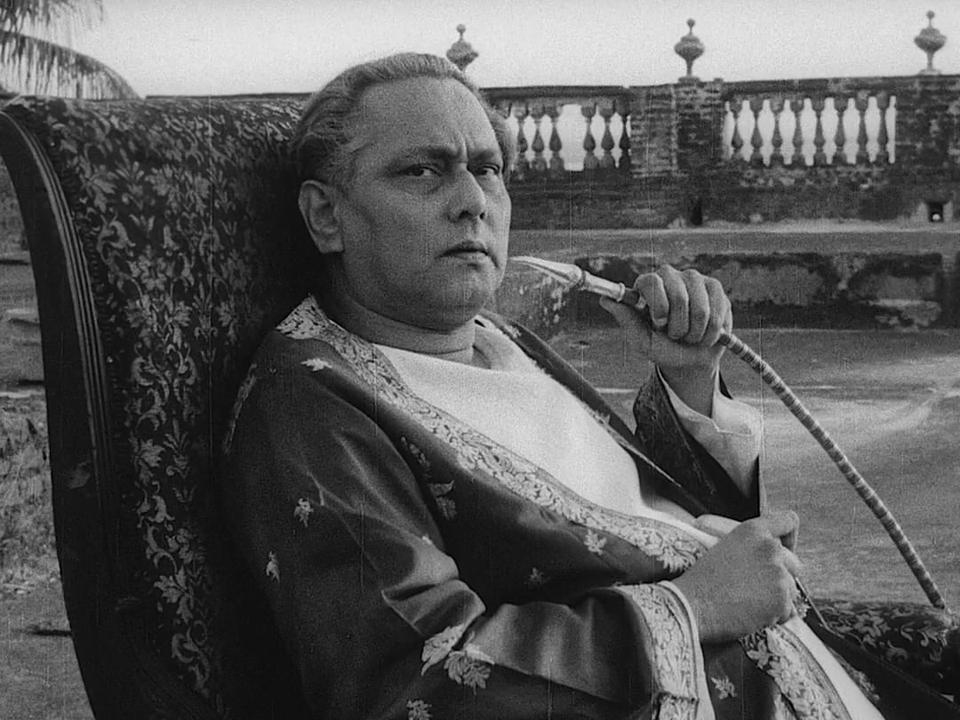
Based on a popular short story by the Bengali writer Tarasankar Banerji Jalsaghar shows the downfall of Biswambhar Roy, an ageing feudal landlord in 1920s India. In his refusal to yield to the new social order, the patriarch becomes a symbol of decaying feudalism in the face of modernity. Music plays a central role in Satyajit Ray’s depiction of misplaced pride and stubbornness. Rather than just accompanying the story, concerts of Indian classical music are an integral part of the narrative.
“I was in bed with my right leg in plaster when I decided to film Tarskanka Bannerji’s famous short story, “The Music Room” (“Jalsaghar”). A nasty fall on the stone steps at Benares had brought about a serious knee ailment. I lay in bed and read all the Bengali books I could lay my hands on. My standing with the distributors wasn’t particularly high at that point, and maybe this was one of the factors which subconsciously influenced my choice of “The Music Room.” Here was a dramatic story which could be laced – legitimately – with music and dancing, and distributors loved music and dancing. But here, too, was scope for mood, for atmosphere, for psychological exploration. I decided on “The Music Room” with clear artistic conscience.”
Satyajit Ray1
"If I were asked what has been my main preoccupation as a film-maker, I should say it has been to find out ways of investing a story with organic cohesion, and filling it with detailed and truthful observation of human behaviour and relationships in a given milieu and a given set of events, avoiding stereotypes and stock situations, and sustaining interest visually, aurally, and emotionally by a judicious use of the human and technical resources at one’s disposal."
Satyajit Ray2
“There is scarcely any plot at all in the conventional sense, yet at the end the viewer feels he has seen a man’s entire life laid out before him and has come to understand not just the man’s character, but something essential to life itself. Gently the film follows the shallow movements of this life; suddenly, from time to time, picking up a detail of almost frighteningly profound and true observation. Ray’s view is serene, but never unmoved; deeply felt but never sentimental.”
Cynthia Grenier3

